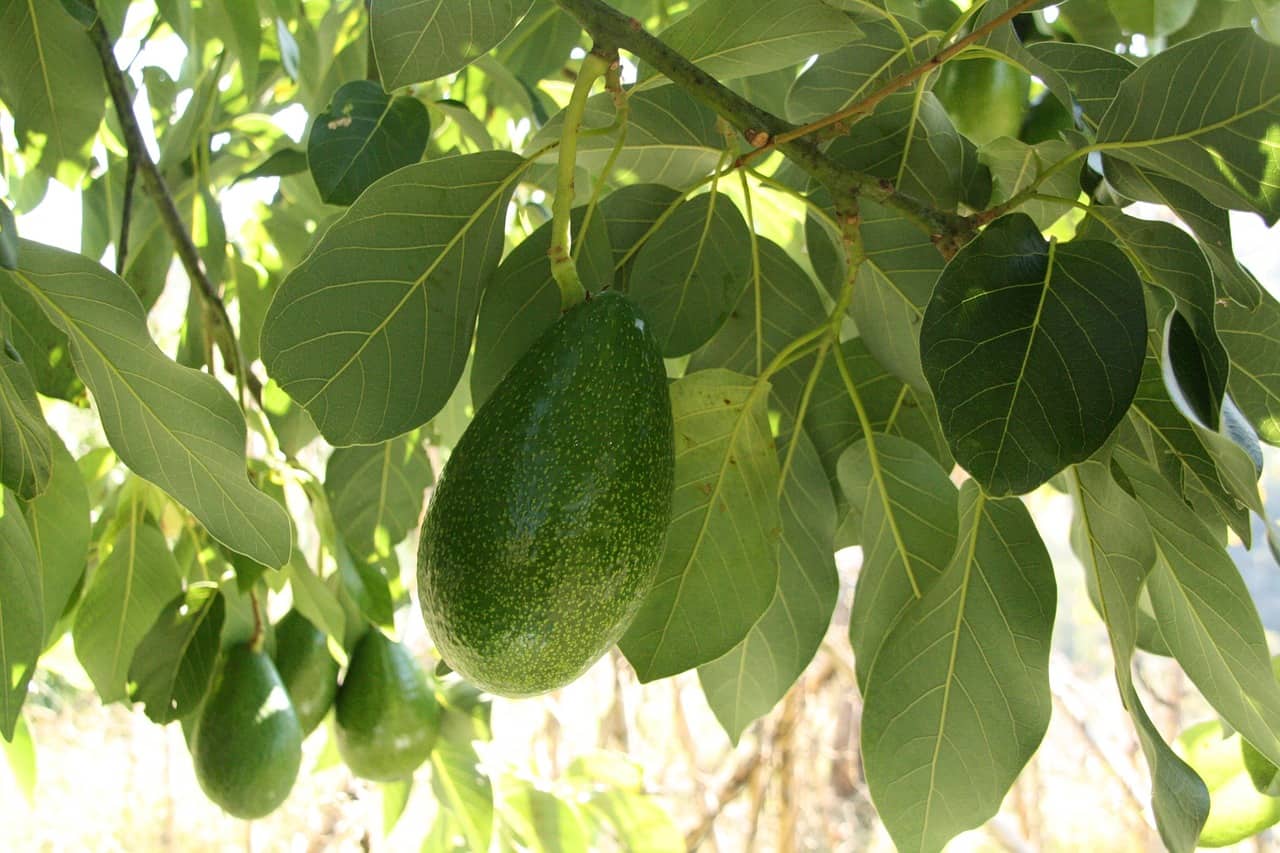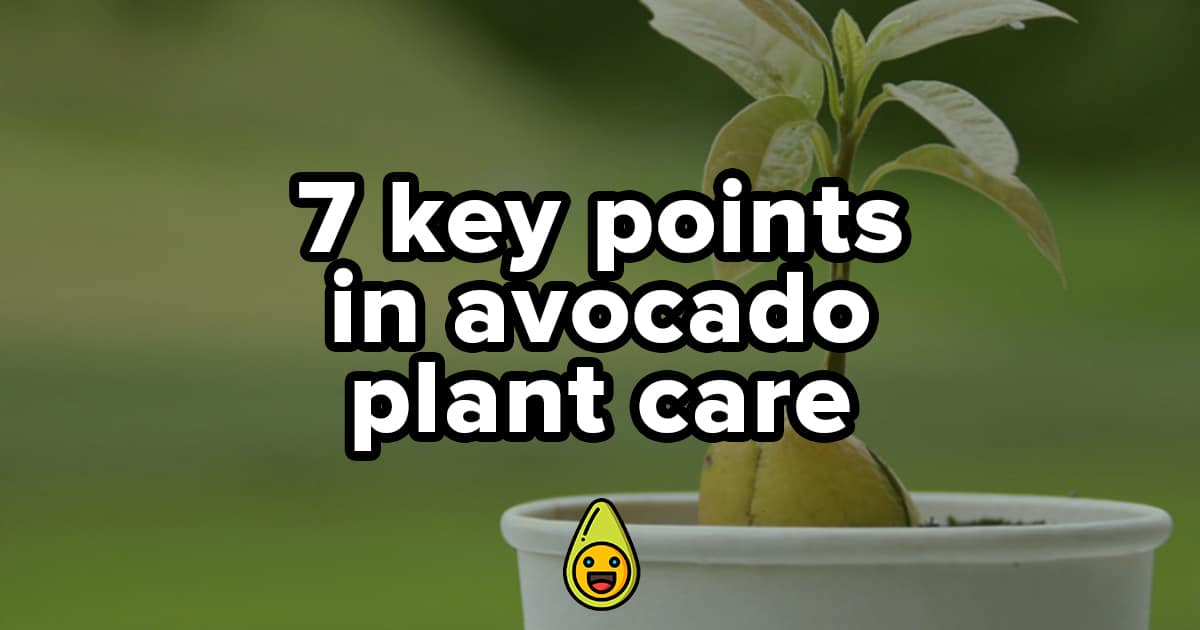Unfortunately, avocados do not fall from the sky. They do, however, grow on trees—avocado trees. As such, if you are someone interested in growing them, it is important to know the basics of what a healthy avocado tree looks and acts like.
This article aims to tackle exactly that. Whether you are
someone looking to grow avocado trees yourself or are simply curious, it will
look at the question of height, and more specifically will talk about the
recommended avocado tree height. That way, you can know what to look for and
avoid when growing your avocado, or if you are simply looking for a way to
criticize that neighbor of yours who you are sure has been growing their
avocados all wrong this whole time.
With that all said, let us get into the article and learn
some new things about the recommended avocado tree height.
Table of Contents
The Many Types of Avocado
The thing to keep in mind with avocado tree height is that it varies between all the different types of avocado out there. The type of avocado you will find in your or nearby garden will vary according to several things. These include stuff such as whether or not the tree is being grown outside or inside (as inside there is only usually space for dwarf varieties), what sort of climate is present, and where on the World the avocado growing site is located.

When it comes to dwarf vs. standard varieties, Guatemalan, West Indian, and Mexican are the primary representatives of the latter, while the only true dwarf variety avocado is the Wurtz avocado, reaching a height of only 10 feet (making it ideal for indoor growth).
The type of avocado tree depends on the type of flower they have. Avocados are generally divided into two groups – an A and B type. Type A flower avocado trees are male (shedding pollen) in the afternoon and female (receptive to pollen) in the morning. Type B flower avocado trees function the other way around. “A flower” avocados are Mexicola, Stewart, and Hass, while “B flower” avocados are Bacon and Zutano. Little cado, or formally Wurtz, has variations with both A flowers and B flowers.
While all of the standard variety avocado trees vary in terms of texture, maturity rate, and fruit size, generally speaking, their average height will reach between 30 and 40 feet, and 15 to 20 feet in width. But do not let this be a necessary cap, as some trees can grow to be 80 feet fall. It all varies from tree to tree.
Shape
Another factor related to the size that is also worth
considering is the shape. When it comes to the shape of an avocado tree, its
canopy is usually regular, smooth, and fairly symmetrical. Its leaves and
branches fill in the crown in a uniform fashion. The members of species also
look quite similar to each other. Younger and middle-ages avocado trees will
grow in a more pyramid-like shape, getting progressively more rounded as they
age.
Pruning
Another thing that you should keep in mind when considering to grow an avocado tree is that they do not like being over-pruned (except for cutting off dead branches), so, if you are thinking that you can just cut off some branches if the tree gets too big, you might want to consider planting something else instead.
The age of your tree also determines its shape. Younger and middle-aged trees grow in a somewhat pyramidal shape, whilst mature trees progressively get more round.
This is why it is very important to consider the space you have available if you are planning to grow anything, including avocados, but also to get acquainted with the plant you are growing – specifically, when it comes to avocado trees, to know which type you are getting, what height the tree can achieve, what shape, and how much space and care that kind of a tree will require.
Growth Rate
The growth rate is also an important element to consider
when we are thinking about the avocado tree height.
On average, avocados have quite the fast growth rate, which
can be both good and bad depending on how you look at it. They can grow two or
more feet in a single growing season, and will probably hit maturity in
approximately twenty years, give or take.
Climate is an incredibly important contributor to either the
growth or decay of avocado trees, and if exposed to freezing temperatures
avocados may die to the ground. If they manage to survive this, then they will
rebound with the same quick growth rate. On this note, mature trees are better
at tolerating colder weather than younger ones, though this difference is only
a few degrees Fahrenheit.
How Do I Ensure Healthy Growth?
Now you are probably asking yourself: how does a person
ensure that their tree will reach the recommended avocado tree height?
The good news is that that is something you need not worry about. Avocados will naturally grow to their usual height, provided of course that you take good care of them. This implies watering them properly, growing them in the proper climate, not over-pruning or over-fertilizing, and generally caring for them as they mature and bear fruit.
Note that Avocados are tropical fruits, meaning that they thrive in hot, well-lit places. The tolerance of cold weather depends on the type of avocado tree. Type A flower avocado trees are more tolerant of cold weather than type B flower trees are.
Regardless, your avocado tree will need full sunlight exposure for most of the day for it to grow at a standard pace, as cold climates may cause the tree to freeze and break down. Luckily, this usually happens top-down, but if you are planning on having taller avocado trees – this may serve as a problem, as you can’t re-grow them faster the second time than you did the first.
The implication of them as tropical fruit, however, does not imply that they like too much humidity, especially in the soil. Improve the drainage of your avocado site with compost and gypsum. The reason why avocados don’t like watery soil is that their roots aren’t complex, on the other hand, this can cause them to dry out and dehydrate faster, so balance the humidity out. Another trick for good drainage is considering planting on a mound or slope. As for the soil, a neutral pH is good, but slightly acidic won’t do any harm, either, so aim for 5.5 to 7.
As mentioned before, an average avocado tree height will range between 20 and 30 feet, so leaving enough room for them to grow (both horizontally and vertically) is also essential.
Another grouping of avocado trees can be done by their spreading: large spreading, medium spreading and small erect. If you are getting large spreading avocado trees, note that they won’t thrive or produce much fruit if you cramp them together like sardines.
Wurtz, also known as little cado, is the only type of avocado tree that may be grown in a pot, the rest will need to be planted directly into the ground. This is why Wurtz is a good option for people who live in a climate that is prone to variation or weather changes – you can just simply move your avocado tree along with its pot to a more suitable area (or temporary shelter it).
Avocados grown in pots/containers will also be limited in their height by the size of the container itself and pruning. The growth of the avocado tree begins in winter to early spring. Mature plants still grow two inches or more yearly on the strong, upright branches by the end of the summer months.
However, if you are thinking about growing other types of avocado tree that reach a height that is up to 65 feet, consider topping your tree, because having too-tall of a tree may be unpractical – the tree may bend, and thus not flower properly, but in case it does not – picking fruit will be hard.
Another thing to remember about avocado trees is when you should plant them after you buy them.
Avocado trees that do not fall into the dwarf category should initially be planted into a 24-inch pot and nurtured to its full potential of life in a container – which is 6 to 8 feet in height with a trunk caliber of 1 to 2 inches. After reaching this size, the avocado tree starts producing fruit and may be planted into the ground. If you buy a very young avocado tree, it may not thrive on its own if you place it into the soil in your garden right away. Note that it may take a few years for young grafted plants to reach the recommended size.
Recap and Final Thoughts
Overall, the thing to remember is that avocados are not
enormous trees that will reach up towards the skies. They are quick-growing,
smaller trees, which mature after some twenty years. Avocado tree height varies
slightly from variety to variety but generally speaking, they will reach 30 and
40 feet (although they can reach up to 80). They have a fairly symmetrical
shape and are generally quite beautiful trees.
Also, because they do not grow very tall, they can strike one as having quite a wide appearance, which makes them rather silly looking, and, thus, a great decoration and addition to your home and/or garden.
The thing to remember with avocado trees is that each one is different and has its unique characteristics. Just because one tree does not fall in these broad generalizations does not mean there is something wrong with it. On that note, always be ready for surprises and know that nothing in nature is set in stone, which is exactly why you will have to be ready for anything that happens along the way – be it providing more space for your avocado tree to grow in height, improving the drainage of your soil, or improving the humidity.
Growing avocado trees requires patience and devotion, but any avocado lovers out there will agree that it’s worth the small hassle for the reward – fresh, home-grown avocado.
Whether you are growing your own avocados or simply wish to educate yourself on this topic, we hope this answers some of your questions about the recommended avocado tree height.










